Abstract
A capsular polysaccharide was isolated from a strain of Clostridium perfringens Hobbs 10 type A by cold-water extraction of whole, heavily encapsulated cells. The water-soluble polymer was isolated by alcohol precipitation and purified by treatment with chloroform-butanol, cetytrimethylammonium bromide, and column gel permeation chromatography by using Bio-Gel A-5m agarose. The formation of a single precipitin line, when the isolated polysaccharide was reacted with its homologous antisera by double diffusion in gel, was considered a criterion of immunochemical purity. The purified polymer appeared as a single peak when eluted from diethylaminoethyl-Sephadex with a linear gradient of NaCl. The polysaccharide was composed of glucose, galactose, galactosamine, and iduronic acid in a molar ratio of 4.1:5.1.7:1, respectively. These constituents accounted for 83% of the dry weight. The polysaccharide appeared to have a molecular weight of 40,000 and exhibited aggregation up to 120,000. A trace of peptide material could not be removed during purification.
Full text
PDF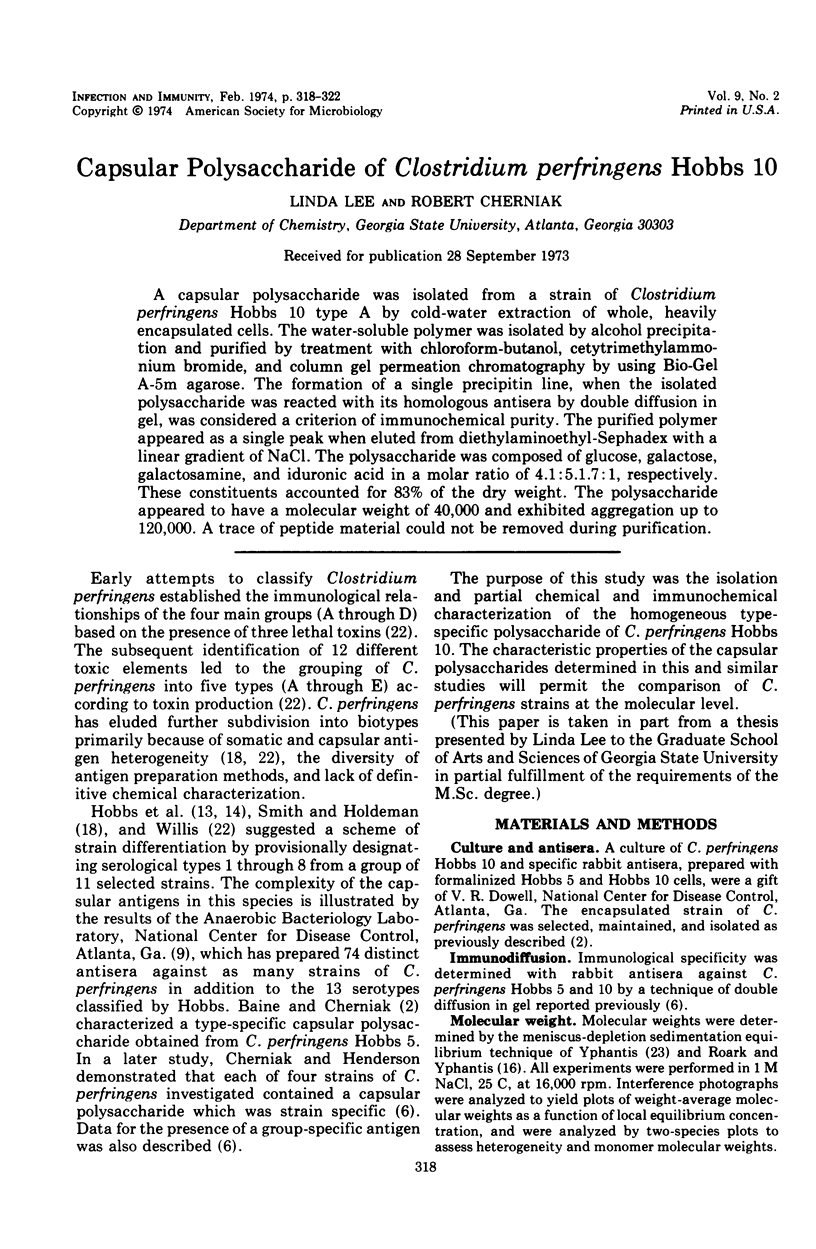
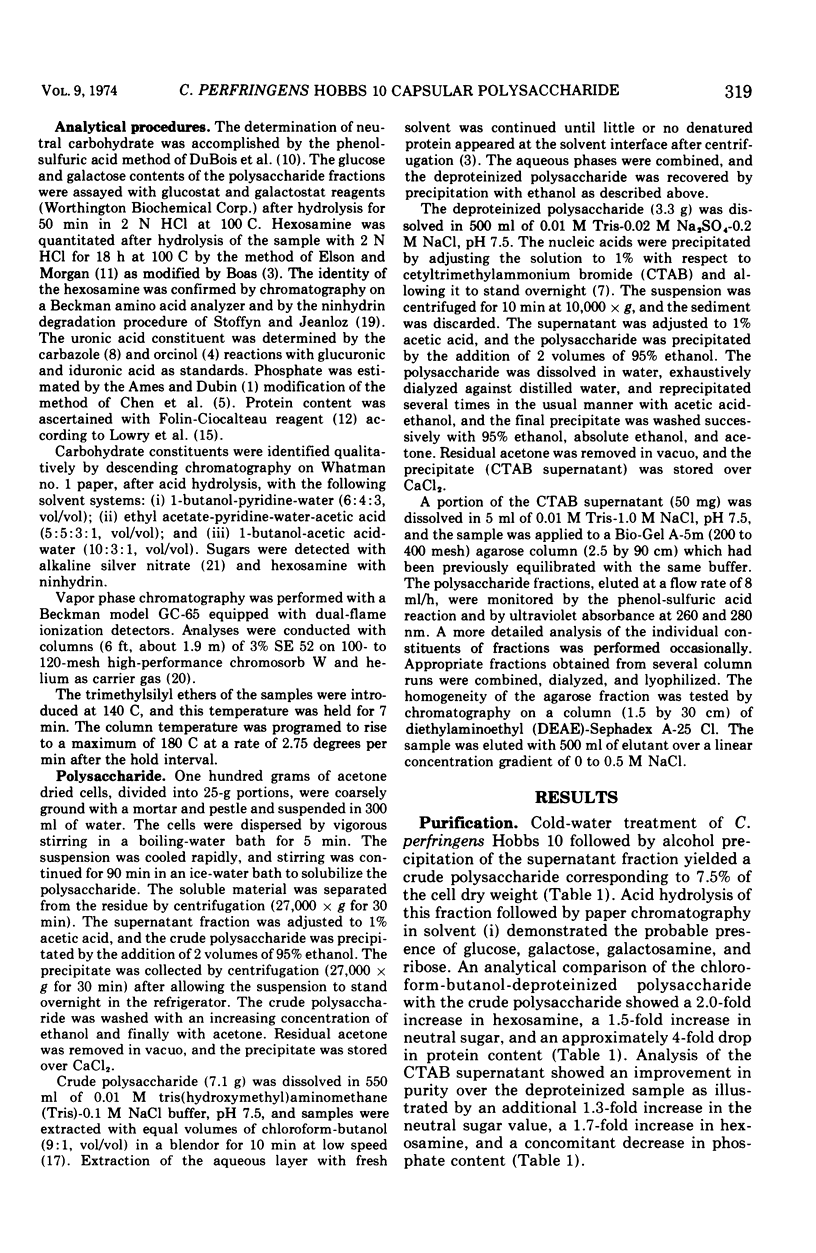
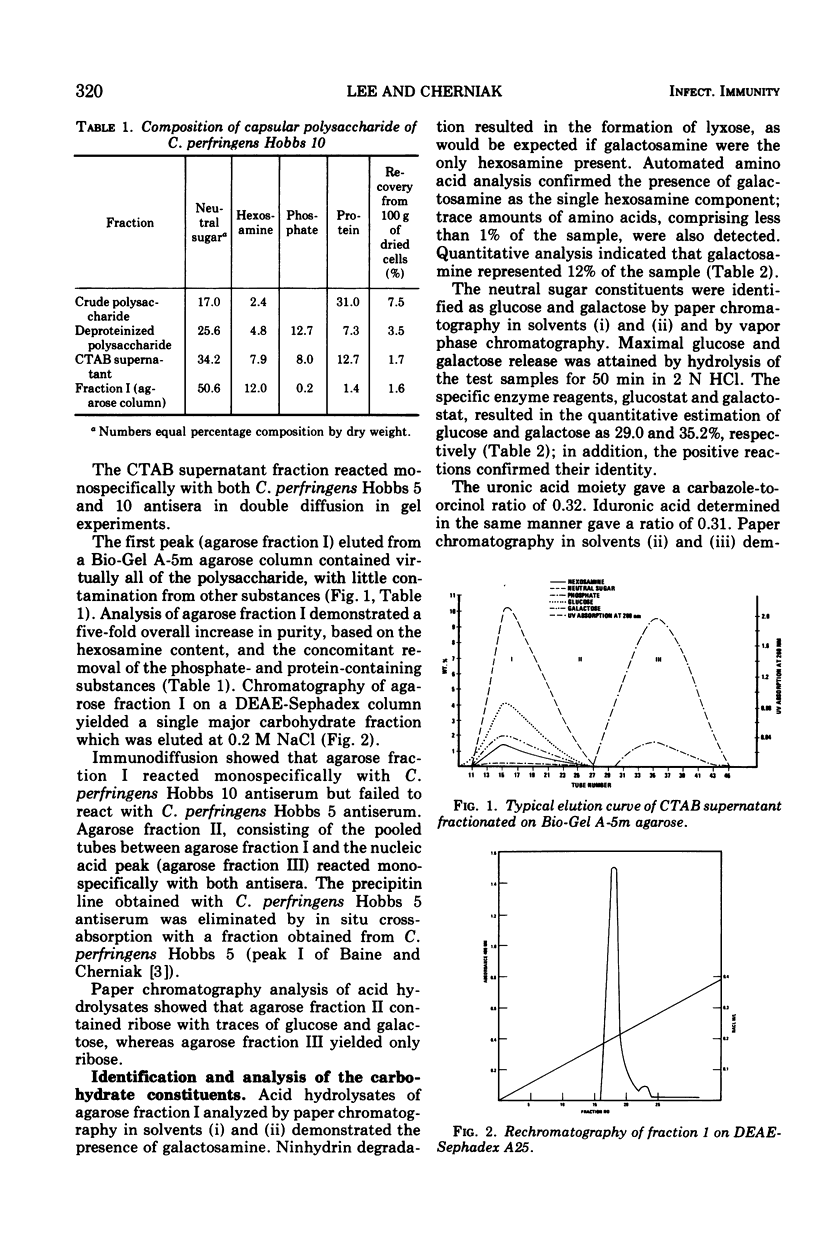
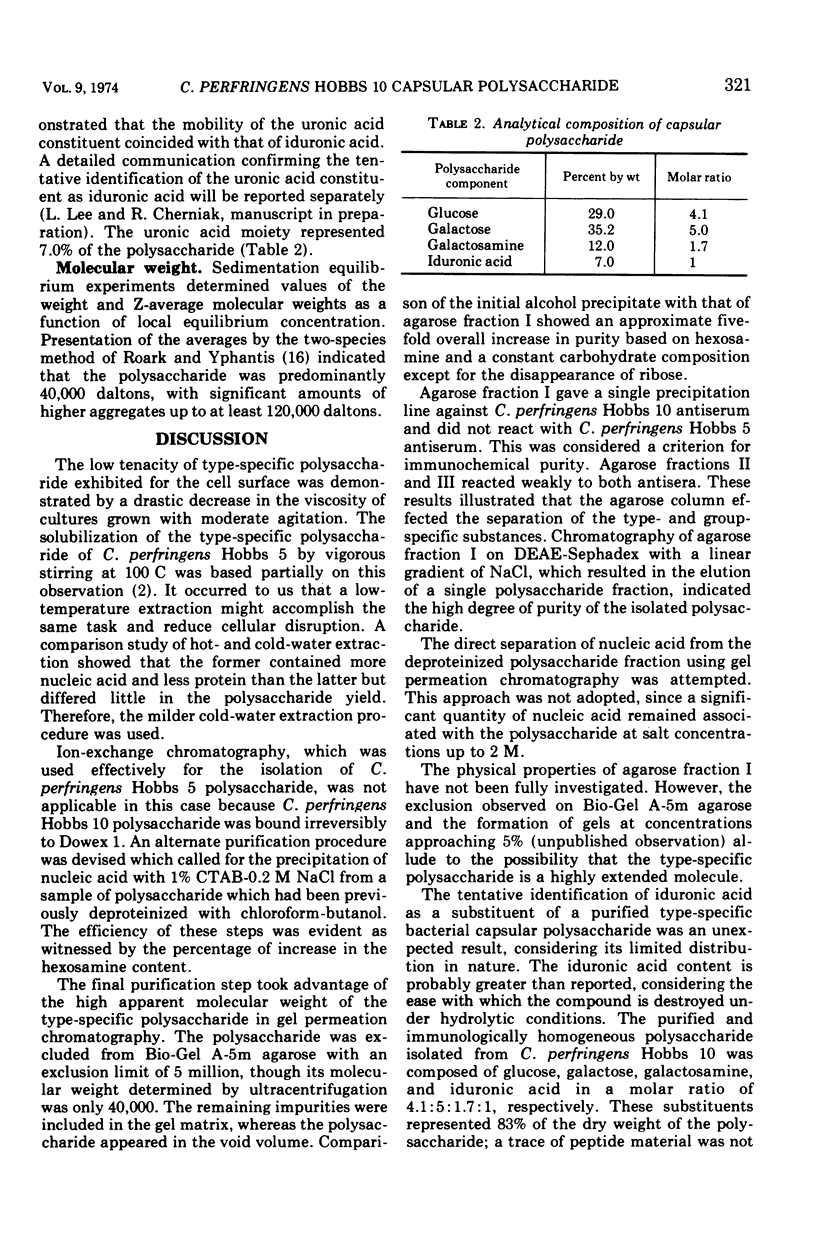
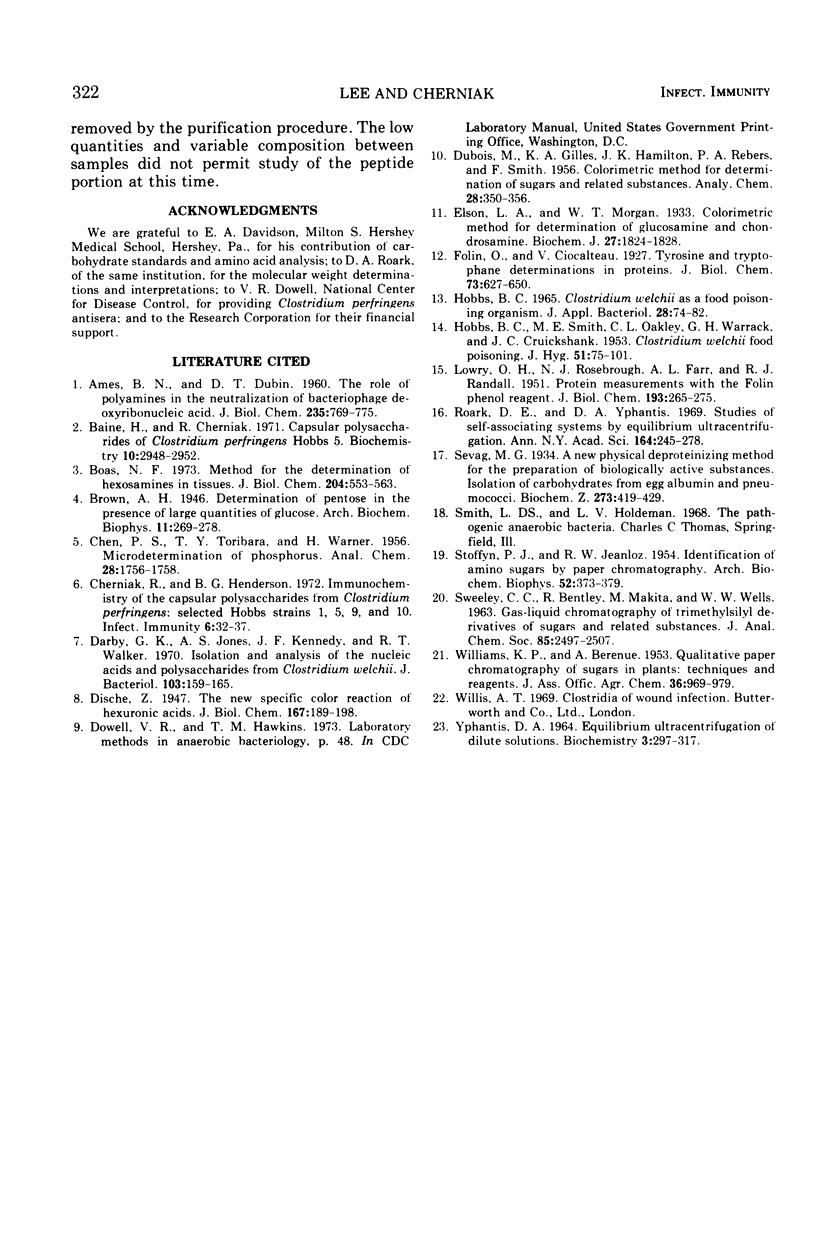
Selected References
These references are in PubMed. This may not be the complete list of references from this article.
- AMES B. N., DUBIN D. T. The role of polyamines in the neutralization of bacteriophage deoxyribonucleic acid. J Biol Chem. 1960 Mar;235:769–775. [PubMed] [Google Scholar]
- BOAS N. F. Method for the determination of hexosamines in tissues. J Biol Chem. 1953 Oct;204(2):553–563. [PubMed] [Google Scholar]
- Baine H., Cherniak R. Capsular polysaccharides of Clostridium perfringens Hobbs 5. Biochemistry. 1971 Jul 20;10(15):2949–2952. [PubMed] [Google Scholar]
- Cherniak R., Henderson B. G. Immunochemistry of the capsular polysaccharides from Clostridium perfringens: selected Hobbs strains 1, 5, 9, and 10. Infect Immun. 1972 Jul;6(1):32–37. doi: 10.1128/iai.6.1.32-37.1972. [DOI] [PMC free article] [PubMed] [Google Scholar]
- Darby G. K., Jones A. S., Kennedy J. F., Walker R. T. Isolation and analysis of the nucleic acids and polysaccharides from Clostridium welchii. J Bacteriol. 1970 Jul;103(1):159–165. doi: 10.1128/jb.103.1.159-165.1970. [DOI] [PMC free article] [PubMed] [Google Scholar]
- Elson L. A., Morgan W. T. A colorimetric method for the determination of glucosamine and chondrosamine. Biochem J. 1933;27(6):1824–1828. doi: 10.1042/bj0271824. [DOI] [PMC free article] [PubMed] [Google Scholar]
- HOBBS B. C., SMITH M. E., OAKLEY C. L., WARRACK G. H., CRUICKSHANK J. C. Clostridium welchii food poisoning. J Hyg (Lond) 1953 Mar;51(1):75–101. doi: 10.1017/s0022172400015515. [DOI] [PMC free article] [PubMed] [Google Scholar]
- LOWRY O. H., ROSEBROUGH N. J., FARR A. L., RANDALL R. J. Protein measurement with the Folin phenol reagent. J Biol Chem. 1951 Nov;193(1):265–275. [PubMed] [Google Scholar]
- Roark D. E., Yphantis D. A. Studies of self-associating systems by equilibrium ultracentrifugation. Ann N Y Acad Sci. 1969 Nov 7;164(1):245–278. doi: 10.1111/j.1749-6632.1969.tb14043.x. [DOI] [PubMed] [Google Scholar]
- STOFFYN P. J., JEANLOZ R. W. Identification of amino sugars by paper chromatography. Arch Biochem Biophys. 1954 Oct;52(2):373–379. doi: 10.1016/0003-9861(54)90137-x. [DOI] [PubMed] [Google Scholar]
- YPHANTIS D. A. EQUILIBRIUM ULTRACENTRIFUGATION OF DILUTE SOLUTIONS. Biochemistry. 1964 Mar;3:297–317. doi: 10.1021/bi00891a003. [DOI] [PubMed] [Google Scholar]


